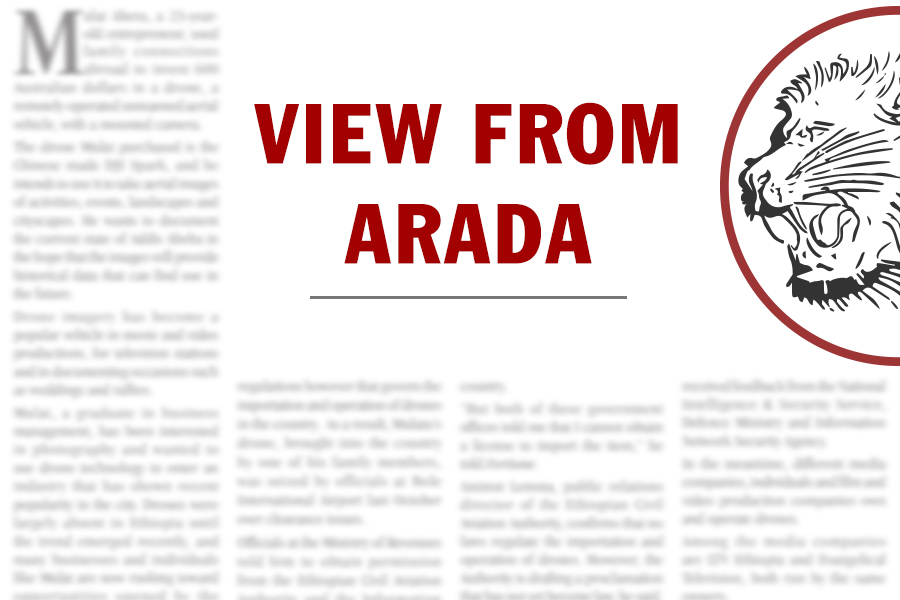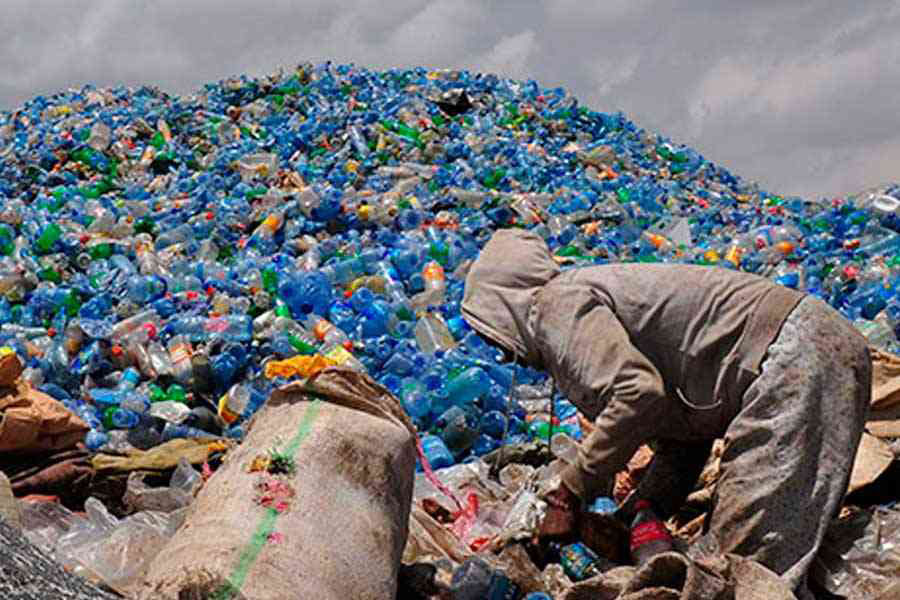
Radar | Nov 16,2019
Apr 13 , 2024
By Daniel Gros
Despite the global disruptions of tariffs and geopolitical strife, international trade peaked in 2022, achieving the highest trade-to-GDP ratio on record. This counterintuitive rise comes even as major economies like the U.S. and China engage in tariff wars and the EU enforces strict sanctions on Russia. In this commentary provided by Project Syndicate (PS), Daniel Gros, director of the Institute for European Policy-Making at Bocconi University, writes that the resilience of the international trading system seems to defy the expected downturn from such conflicts.
The emergence of an open multilateral trading system that separated trade from geopolitics played a pivotal role in driving the post-World War II economy. But with trade policies increasingly shaped by geopolitical considerations, a new paradigm is becoming visible.
This trend started with the tariffs that former US President Donald Trump imposed on Chinese imports in 2018, which President Joe Biden's administration has maintained, and which caused China to impose its own tariffs on imports from the United States. Then, in 2022, following Russian President Vladimir Putin’s invasion of Ukraine, G7 countries and the European Union (EU) imposed sweeping economic sanctions on Russia, effectively prohibiting exports to Russia and imports of Russian goods.
Instead of causing global trade to fall, as many expected, these trade barriers and restrictive measures merely slowed down globalisation, turning it into "slowbalisation." Remarkably, despite the war in Ukraine and the supply-chain disruptions of the past few years, trade as a percentage of GDP reached a record high in 2022, underscoring the resilience of the international trading system. The increases in container-shipment prices since 2022 can be attributed to an unexpected surge in the volume of goods shipped globally.
But, while it may be tempting to argue that geopolitically motivated measures have had a negligible economic impact, the perceived resilience of global trade can be misleading. Although the recent trade barriers led to higher trade volumes, many carry significant costs.
At first glance, the notion that a tariff could boost trade may seem paradoxical. But, almost all the tariffs and trade restrictions imposed by the US since 2018 have been specifically aimed at China, leaving imports from other countries untouched. Consequently, imports from China have fallen sharply, while imports from countries like Vietnam have surged. Many consumer products shipped to the US are now assembled in Vietnam and other Southeast Asian countries.
However, these imports still rely on intermediate inputs from China. Consequently, trade volumes have grown because, while US imports of consumer goods from Asia have remained consistent, China’s exports of intermediate inputs to its Asian neighbours have increased. Similarly, although Mexico has overtaken China as the leading exporter of goods to the US, its imports from China have surged by nearly 40pc since 2018.
The electric vehicle (EV) market illustrates how discriminatory practices can boost trade. Tariffs on Chinese EVs are approaching 30pc. American regulations disqualify EVs containing components produced or assembled in designated “entities of concern” from receiving tax credits, effectively excluding Chinese manufacturers from the American market. By contrast, European EVs are subject to a significantly lower tariff of 2.5pc and qualify for a 7,500 dollar subsidy under the Inflation Reduction Act when leased. Consequently, Chinese EV exports have shifted to Europe, while European automakers have found success in the US.
The EU is undergoing a similar shift. In the wake of Western sanctions on Russia, European exports to Turkey and Central Asian countries such as Kazakhstan and Kyrgyzstan have skyrocketed. At the same time, trade volumes between these countries and Russia have soared.
Such methods of circumventing sanctions or discriminatory tariffs result in higher production and logistics costs, as goods must now be shipped to intermediate countries before being transported to the US. Sanctions and discriminatory tariffs can thus boost trade and reduce welfare. These harmful consequences underscore the importance of the “most-favoured nation" principle that has long been the cornerstone of the global trading system.
Concerted efforts to liberalise trade, first through the General Agreement on Tariffs & Trade (GATT) and subsequently through the World Trade Organisation (WTO), have increased trade volumes and overall welfare thanks to their non-discriminatory approach. By contrast, today’s geopolitically driven discriminatory tariffs and trade barriers explicitly target specific countries viewed as hostile or potential threats.
Who pays the price?
Economic theory (and common sense) provides a clear answer: countries that impose discriminatory trade restrictions end up bearing the costs while the rest of the world benefits. Consequently, the US and China are negatively affected by their tariff war, while Vietnam and Mexico gain by serving as intermediaries. Turkey and Central Asian countries benefit from sanctions against Russia, while the EU foots the bill.
This distribution of costs and benefits helps explain the limited international opposition to Trump’s China tariffs. After all, the EU, Mexico, or Vietnam have little incentive to object to a US policy that benefits their industries. Consequently, international pressure will unlikely deter major powers like the US or China from prioritising geopolitical strategies over trade liberalisation. To counter this tendency, it is crucial to make political leaders aware of the adverse effects of trade barriers.
As the most open and least geopolitically ambitious of the world’s major economic powers, the EU is likely to recognise this first. But, the stakes are much higher for the US and China. The US, in particular, would lose the most if it continued its trade war with China. To prevent this outcome, the course must change and return to the non-discriminatory principles that have long underpinned global trade policies.
PUBLISHED ON
Apr 13,2024 [ VOL
25 , NO
1250]


Radar | Nov 16,2019

View From Arada | May 25,2024

Fortune News | Jan 03,2025

Sunday with Eden | Apr 22,2023

View From Arada | Aug 03,2024

Commentaries | Aug 27,2022

Viewpoints | Oct 24,2020

Fortune News | Mar 30,2024

Viewpoints | Aug 10,2024

Agenda | Jul 30,2022

My Opinion | 131766 Views | Aug 14,2021

My Opinion | 128149 Views | Aug 21,2021

My Opinion | 126095 Views | Sep 10,2021

My Opinion | 123717 Views | Aug 07,2021

Dec 22 , 2024 . By TIZITA SHEWAFERAW
Charged with transforming colossal state-owned enterprises into modern and competitiv...

Aug 18 , 2024 . By AKSAH ITALO
Although predictable Yonas Zerihun's job in the ride-hailing service is not immune to...

Jul 28 , 2024 . By TIZITA SHEWAFERAW
Unhabitual, perhaps too many, Samuel Gebreyohannes, 38, used to occasionally enjoy a couple of beers at breakfast. However, he recently swit...

Jul 13 , 2024 . By AKSAH ITALO
Investors who rely on tractors, trucks, and field vehicles for commuting, transporting commodities, and f...

Jul 5 , 2025
Six years ago, Ethiopia was the darling of international liberal commentators. A year...

Jun 28 , 2025
Meseret Damtie, the assertive auditor general, has never been shy about naming names...

Jun 21 , 2025
A well-worn adage says, “Budget is not destiny, but it is direction.” Examining t...

Jun 14 , 2025
Yet again, the Horn of Africa is bracing for trouble. A region already frayed by wars...

Jul 6 , 2025 . By BEZAWIT HULUAGER
The federal legislature gave Prime Minister Abiy Ahmed (PhD) what he wanted: a 1.9 tr...

Jul 6 , 2025 . By YITBAREK GETACHEW
In a city rising skyward at breakneck speed, a reckoning has arrived. Authorities in...

Jul 6 , 2025 . By NAHOM AYELE
A landmark directive from the Ministry of Finance signals a paradigm shift in the cou...

Jul 6 , 2025 . By NAHOM AYELE
Awash Bank has announced plans to establish a dedicated investment banking subsidiary...